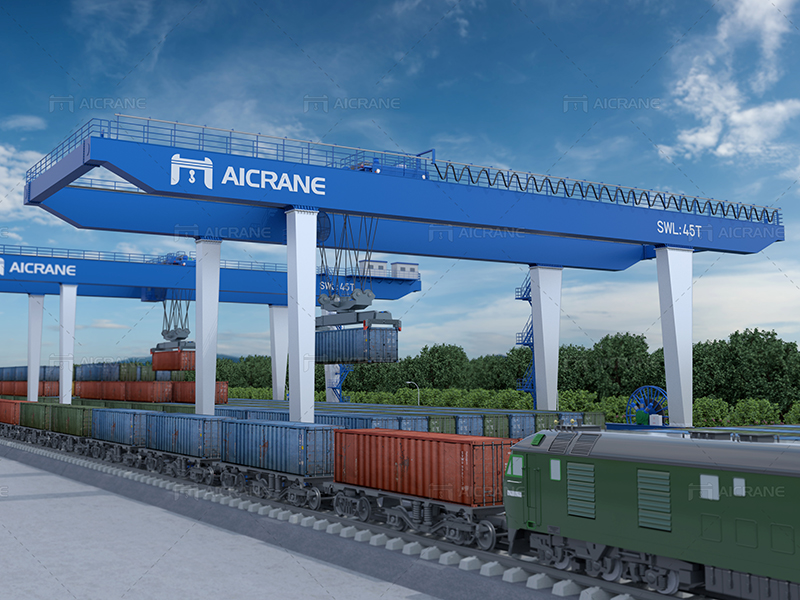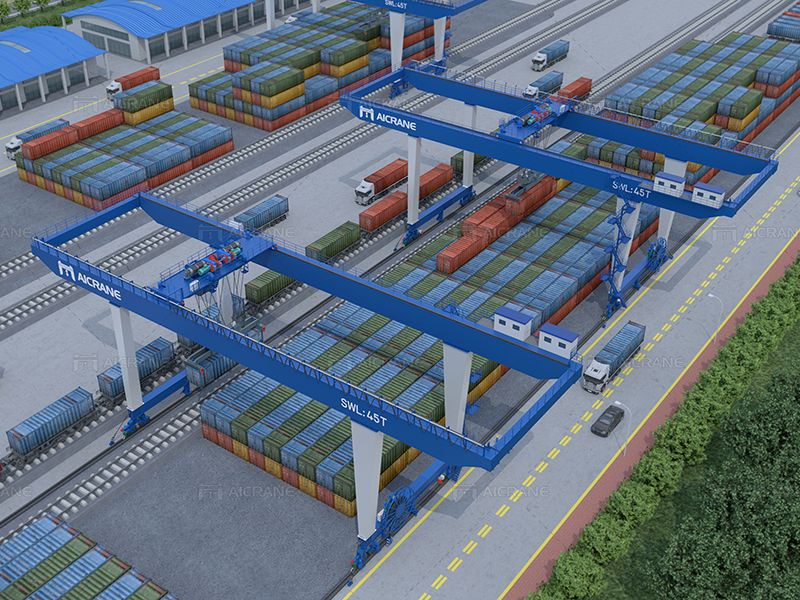In the dynamic world of logistics, efficiency and adaptability are paramount. Intermodal gantry cranes, with their towering structures and precise movements, have emerged as the workhorses of container handling in ports and terminals worldwide. One of the key questions often asked is whether these giants of the shipping industry can handle the diverse sizes of containers that populate our global trade routes. This article delves into the intricate details of intermodal gantry cranes, exploring their ability to handle containers of varying sizes and the technological advancements that make this versatility possible.

Understanding Intermodal Gantry Cranes:
Intermodal gantry cranes are engineering marvels designed to seamlessly transfer containers between ships, trucks, and trains in bustling intermodal terminals. Their large spans and robust structures enable them to traverse container yards with precision, reaching over multiple lanes of containers. Unlike traditional cranes, intermodal gantry cranes are uniquely equipped to handle the complexities of intermodal transportation, making them indispensable in the modern shipping landscape.
Variable Container Sizes:
Containers come in a range of sizes, including standard 20-foot, 40-foot, and 45-foot containers. The ability of intermodal gantry cranes to handle this variety is a testament to their versatility. This adaptability is achieved through the integration of adjustable spreaders—a crucial component that can be modified to securely lift containers of different dimensions. The telescopic nature of these spreaders allows them to accommodate various container sizes with ease.
Adjustable Spreader Mechanism:
At the heart of an intermodal gantry crane’s flexibility is the adjustable spreader mechanism. This mechanism typically consists of telescopic arms that can extend or retract based on the size of the container being lifted. As the spreader adjusts to the container dimensions, it ensures a secure grip, allowing for safe and efficient handling. This feature enables intermodal gantry cranes to seamlessly transition between different container sizes without the need for manual adjustments, contributing to faster and more streamlined operations.
Technological Advancements:
The capability of intermodal gantry cranes to handle different container sizes is not solely reliant on mechanical adjustments. Technological advancements play a pivotal role in enhancing the efficiency and adaptability of these cranes. Modern intermodal gantry cranes often come equipped with sophisticated control systems that enable precise positioning and automation of the lifting process. These systems are programmed to recognize and adjust to the size of the container, ensuring optimal handling without compromising safety.

Load-Sensing Technology:
Load-sensing technology is a crucial element in the adaptability of intermodal gantry cranes. These systems continuously monitor the weight and distribution of the load being lifted. By dynamically adjusting the tension and balance of the spreader, the container handling gantry crane can effectively handle containers of varying weights and sizes. Load sensors provide real-time feedback to the control system, allowing for immediate adjustments and maintaining a high level of operational safety.
Operational Efficiency and Throughput:
The ability to handle different container sizes positions intermodal gantry cranes as strategic assets in container terminals seeking to maximize operational efficiency and throughput. Ports and terminals are dynamic environments where containers of various sizes arrive on a daily basis. The adaptability of intermodal gantry cranes ensures that the terminal can accommodate diverse cargo requirements without disruptions, leading to faster turnarounds and increased productivity.
Challenges and Considerations:
While intermodal gantry cranes excel in their ability to handle different container sizes, certain challenges and considerations merit attention. Retrofitting existing terminals to accommodate the technological requirements of modern intermodal gantry cranes may involve significant infrastructure modifications. Additionally, proper training for personnel involved in the operation and maintenance of these advanced systems is essential to ensure optimal performance and safety.
Conclusion:
Intermodal gantry cranes stand as pillars of efficiency and adaptability in the world of container handling. Their ability to handle containers of varying sizes is not just a feature but a necessity in the complex and ever-evolving landscape of global trade. The marriage of mechanical ingenuity and cutting-edge technology equips these cranes to navigate the challenges posed by diverse container sizes, contributing to the seamless flow of goods across the interconnected web of our modern supply chain. As ports and terminals continue to embrace innovation, intermodal gantry cranes will remain at the forefront, embodying the dynamic spirit of the logistics industry. To learn more, click here https://steelmillcranes.com/